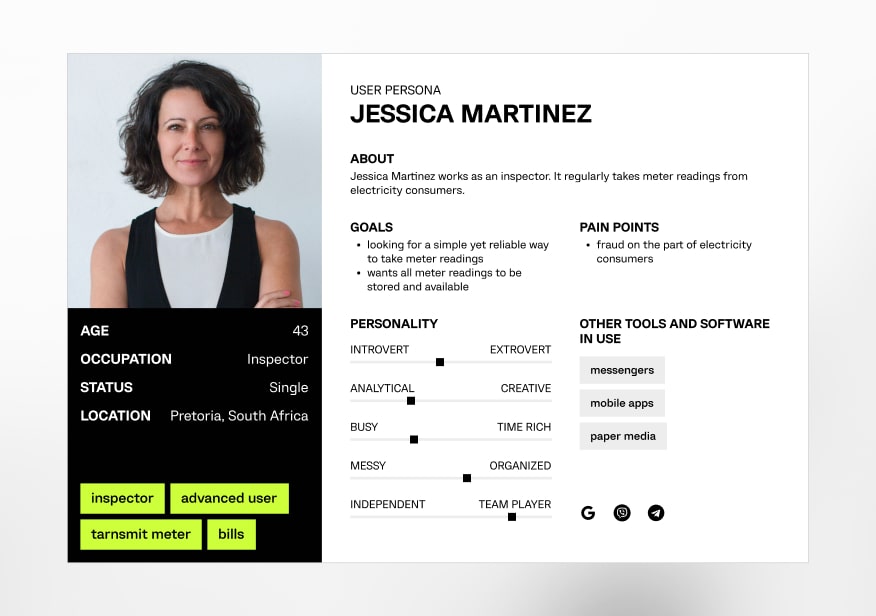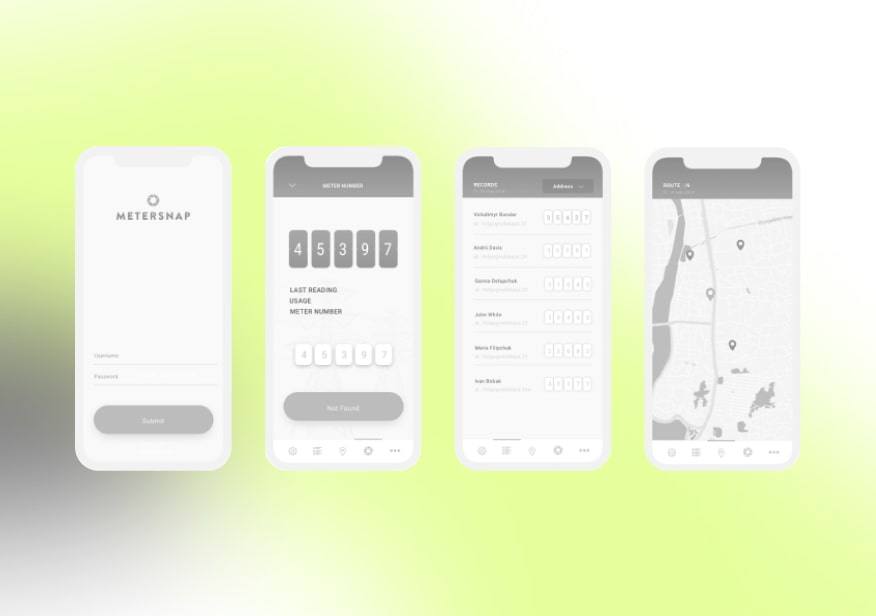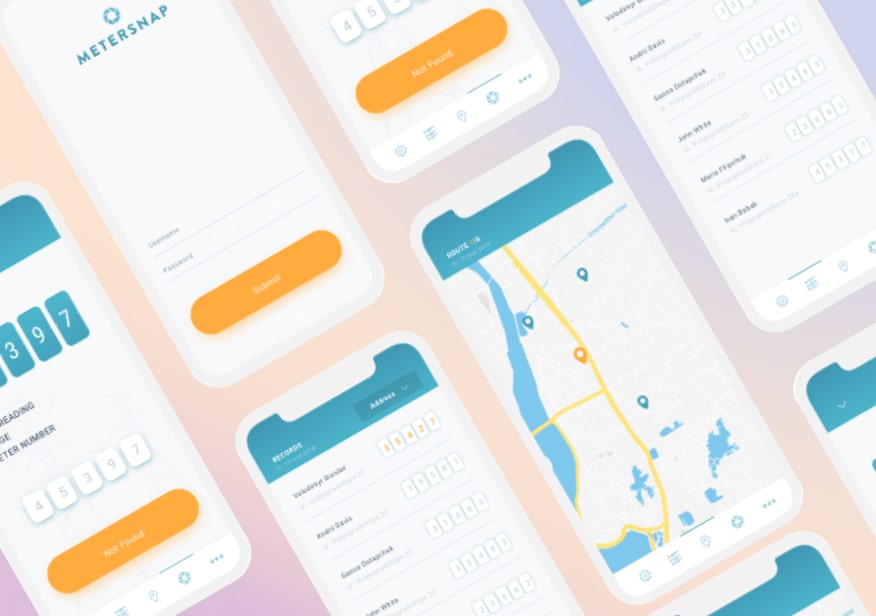Our client needed a solution to streamline inspections, reduce fraud, and enhance customer experiences in the energy industry. Our team helped by developing a mobile app powered by AI and computer vision technologies. As a result, the client obtained an efficient tool that accelerated inspections, minimised fraudulent activities, and significantly improved overall customer satisfaction.
Our client is a major energy sector player, ranked among Africa’s largest utility companies. For many years, they have been dedicated to providing electricity to private households and local businesses, catering to the ever-growing demand for energy in the region. Their established presence and significant inspector workforce made them a leader in the African utility market.
The challenges included significant financial losses due to meter reading fraud, a vast network of outdated analogue meters, labour-intensive manual data collection processes, and a declining customer experience.
Computools proposed a strategic digital transformation initiative to address these pressing issues. We suggested to develop the MeterSnap mobile application. The application was designed to automate electricity meter readings for the company’s employees. The server administrator created personal accounts for each employee and transferred their login data to the inspectors. This eliminated the registration process, dispensing with the need for a registration field on the login screen.
By implementing the MeterSnap application, the company achieved a flexible approach to managing multiple tariffs, leading to a substantial increase in revenue, all with minimal additional resource requirements. Furthermore, the application included definitions of employee roles and permissions to curb malpractice and fraud, reinforcing the integrity of operations. This digital transformation initiative served as a comprehensive solution to the client’s problems and revitalised the utility market in Africa.
Computools was chosen for this project because of its digital transformation expertise and experience developing mobile apps for the energy industry. The team also has a strong track record of delivering.
Computools has a team of experienced software engineers with expertise in various technologies, including neural networks, mobile development and web development.
Before implementing the app, our client faced challenges in streamlining inspections, reducing fraud, and enhancing customer experiences. Manual inspection processes were time-consuming and prone to errors, while fraudulent activities were difficult to detect. Additionally, the lack of a robust system for customer interaction hindered overall satisfaction and efficiency.
The company conducted market research and received proposals from several contractors. The following criteria were considered during the research:
As a result of the research, the company selected Computools as the contractor to develop and implement a mobile app for meter reading.
Our team of specialists leveraged their expertise in AI and computer vision technologies to design a mobile app powered by neural networks. We focused on training the neural network for image processing and implementing geolocation features to enhance data validation. Additionally, we ensured a state-of-the-art design and intuitive interface for optimal user experience.
The successful implementation of our solution transformed our client’s daily operations and significantly improved customer experience. The application’s interface provided easy access to essential information, such as meter readings and consumption history, enabling efficient management of multiple tariffs and increased revenue. Key issues, such as auto-recognition of meter serial numbers and readings, were addressed through neural network training and geolocation implementation. Overall, our solution empowered our client to enhance operational efficiency, minimise fraud, and deliver exceptional service to their customers.
In this case, the design tasks encompass a range of aspects associated with developing and designing the MeterSnap application. Creating an intuitive and aesthetically pleasing user interface for the mobile app while ensuring an excellent user experience involved designing user-friendly navigation, clear control elements, and an efficient screen structure to facilitate inspectors' work and enhance customer interaction with the application.

Creating a detailed profile of the typical application user, considering their needs and preferences.

Outlining the hierarchical structure of the application's pages and navigation flow.

Drafting basic, low-fidelity visual representations of the application's layout and content placement.

Developing the final, high-fidelity graphical user interface, including design, icons, and interaction elements.
NATIVE LIBRARY (C/C++, STL, NEURAL NETWORKS)
The cross-platform library was designed for image processing and recognition across desktop and mobile platforms. OpenCV was chosen for the input frame pre-processing, contour analysis, and recognition area setting. Image recognition was implemented using a neural network-based classifier.
DESKTOP CLIENT/TRAINER (C++, QT 5.X, QML)
Our team developed a desktop application using a Qt 5.x framework and Qt QML technology. This application was used for neural network training, control, and testing. Instead of a mobile phone, a webcam was used for data input.
ANDROID CLIENT (JAVA, ANDROID SDK, ANDROID NDK, REALM DB, RXJAVA, RETROFIT2)
Our developers implemented the mobile application with native library features for image recognition, domain logic for data analysis, and auxiliary functional units. The local RealDB database, a high-performance NoSQL database for mobile platforms, was implemented to ensure the application's offline operation.
WEB API SERVER (JAVA, SPRING FRAMEWORK, MONGODB)
Centralised data storage and mobile client request processing were implemented in a web server based on Java and Spring Framework. Our software engineers settled on MongoDB as a server database due to its high performance and speed parameters.
We chose the Scrum project management approach with two-week sprints to ensure continuous delivery and accurate fulfilment of the development plans. Agile methodology necessitated close cooperation with the client to introduce new ideas and approve adjustments. Every sprint was finalised with the testing and demonstration of the implemented features.


“Computools was selected through an RFP process. They were shortlisted and selected from between 5 other suppliers. Computools has worked thoroughly and timely to solve all security issues and launch as agreed. Their expertise is impressive.”